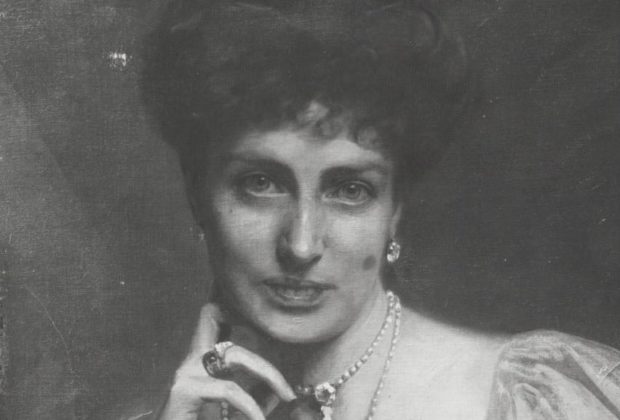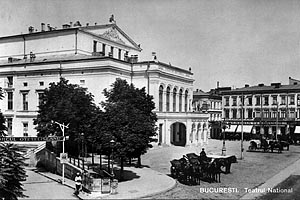
A story about Romanian aristocracy – Nadejda Stirbey
The aristocracy was not hiding from the ordinary public. It was alive, dynamic and not at all primly. It simply existed. Until 1945, the path towards the high class was speckled with true introductions regarding behavior, clothing, the measure of words in reasonable tones and gestures that were supposed to be as discreet as possible. One could become part of the upper class by the power of spirit and with the aid of a delicate and not at all aggressive persuasion.
The high class was investing in its own spiritualization, often helping those who were lacking the means, by using certain accessories such as the bank account and the additional mansion in a good neighborhood that is occasionally transformed in a literary gathering, club for artists, philanthropic society, etc. The teenager going into society was a discreet event – the first ball – organized at the age of 15-16, when the parents were introducing him to the distant relatives, to the friends of various social ranks and to the business partners. In their turn, the adults were stepping on the public scene and participated at charity parties to collect the necessary funds for ending some ordinary sufferings that the society had difficulties coping with.
Aristocracy has always had a story connected to power and to the export of models. But, we, the people of our times, are missing out on a significant detail – the starting point. How did this story begin after all? The answer could be – out of some sort of necessity. It is rather about an attitude that follows history and that is always prepared for changes of scenery. There is nothing «glossy», nor «glamourous» about it. The old Greeks have fundamentally defined this attitude that follows history. If they were not able to keep it anymore, the high life stopped existing. And the starting point of our story is right under the etymology of the most used word that defines high class: «aristocracy». We have one word formed of «aristos» (meaning better, wiser, enlightened) and cratos (meaning power). Therefore, for the old Greeks and for the entire ancient world, it was essential that power remained with the best of people.
Noblesse oblige means having more obligations than rights. When the high level of demography believes they have more privileges than obligations, they stop being the Greek definition of aristocracy. Looking at Nadejda`s face painted by Alfred Schwarz, we can observe the discretion of honor and the modesty of elegance. And, behind these, slightly hidden by delicate gestures, there is a lot of perseverance and a fighter`s spirit. All these traits were being used to fulfill a life project, which was not different from the long term project of Romania.
Princess Nadejda was born in 1876, in one of the aristocratic residences of Saxa, in Loschwitz, in a quiet and settled down world; her parents were Prince George G. Bibescu and Princess Marie-Henriette-Valentine de Riquet de Caraman-Chimay. European aristocracy was living its last decades of glamour and, very importantly, Romanian aristocracy had been included in the European high class families for over two hundred years.
Therefore, Nadejda Știrbey (1876-1955) has spent her childhood in the German Empire and she got to know Romania – the country of her father and also of her husband – in her youth; in her adulthood she loved France and Paris very much. In 1895 she married her 2nd degree cousin, Prince Barbu A.Știrbey (1872-1946). In Bucharest, Nadejda lived either at the Știrbey family residence on Victoriei Road, either at the Buftea residence; which she preferred.
Nadejda did not live her life far away from the problems of her adoptive country, as she was in Bucharest during the First World War and afterwards during the Romanian administration in 1916-1918 she retired in Iasi, in Moldavia and has participated as a volunteer in the nurse corps to care for the war casualties and refugees. She did not leave Romania; all the events she went through were recorded in a journal that she had kept all these years. Nadejda was of German culture and she used to write using her native language. She also describes her coming back to Bucharest in the fall of 1918: “There was a terrible rainfall during my journey, but nevertheless I was wonderfully welcomed in all the stations, and, finally I arrived in Bucharest. First of all, at the railway station, I saw the large and kind face of Berthelot, crying tears of joy; all those shiny faces, starting with our Queen dressed in the roșiori commander costume. I shall never forget the frenzy, the spontane ous and crazy enthusiasm of people, the road guarded by English, French and Romanian troops and the joy of seeing them marching together…. These are the moments that are deeply engraved in the heart and nothing can erase them. Coming back to our old home in Bucharest, the people crying of the joy of finally seeing us in this ancient house, our first dinner with champagne and goodies; the joy of seeing us all dressed up around a table, cheerfully talking with the French officers…It felt like a dream where I was putting every object in its place and then, after all was in order, it felt like I had never left these places”.
The couple spent the first two decades in the vast Buftea estate, the palace in Victoria Road in Bucharest being used only when some guests arrived in town or during some family events (balls, weddings). The written conversations had with the family members indicate that Buftea was their home; Nadejda was critical about both the climate and society of Bucharest, preferring a more secluded lifestyle.
Appreciated by her family and friends as a devoted wife and mother involved in the education of her four daughters, Nadejda had totally committed herself to some creative activities in the space of her home: painting, making embroideries, tailoring clothes, listening to classical music, playing the piano and the violin, writing poems and theater plays, ordering and growing all sort of plants in her garden and taking care of the entire Buftea estate.
Barbu Știrbey was a man of much refinement, very cultivated and well-mannered, a handsome man with black and rich hair, wearing typical English attire – and for all the above being called the “White Prince”. His daughters worshiped him and, when they were asked how they wanted their future husbands to be like, they all answered: “Like our father”; of course this did not happen.
Barbu Știrbey was for Queen Mary a political and economical advisor, a friend, not just a lover. Between 1907 and 1927, until Ferdinand died, the Romanian political world was dominated by the axis Brătianu (Prince Barbu`s brother in law) – Știrbey – Maria – Ferdinand. Barbu Știrbey was also the administrator of the Crown`s Estates, so practically he was managing the wealth of the Royal House.
The Queen fell in love with the Buftea estate. She especially loved to walk in the 30 ha park which today is also classified as historical site. Nadejda, Barbu`s wife, pretended she did not know, moreover she was taking walks with the Queen in this park. Because Mary considered herself to be a “Judging Queen”, many of the decisions concerning Romania`s inter-war politics were taken after consulting Prince Barbu in the second floor bedroom of the palace.
Nadejda was the only one in the family who remained in the country after the communists came. She has lived over Barbu’s lifetime fourteen more years; her last years were darkened by the suffering caused by the paralysis of her feet. Her daughters all left for abroad, none of them are still alive. The Buftea Palace was managed by Nadejda until 1949, and, after nationalization, the entire fortune had become state property.









